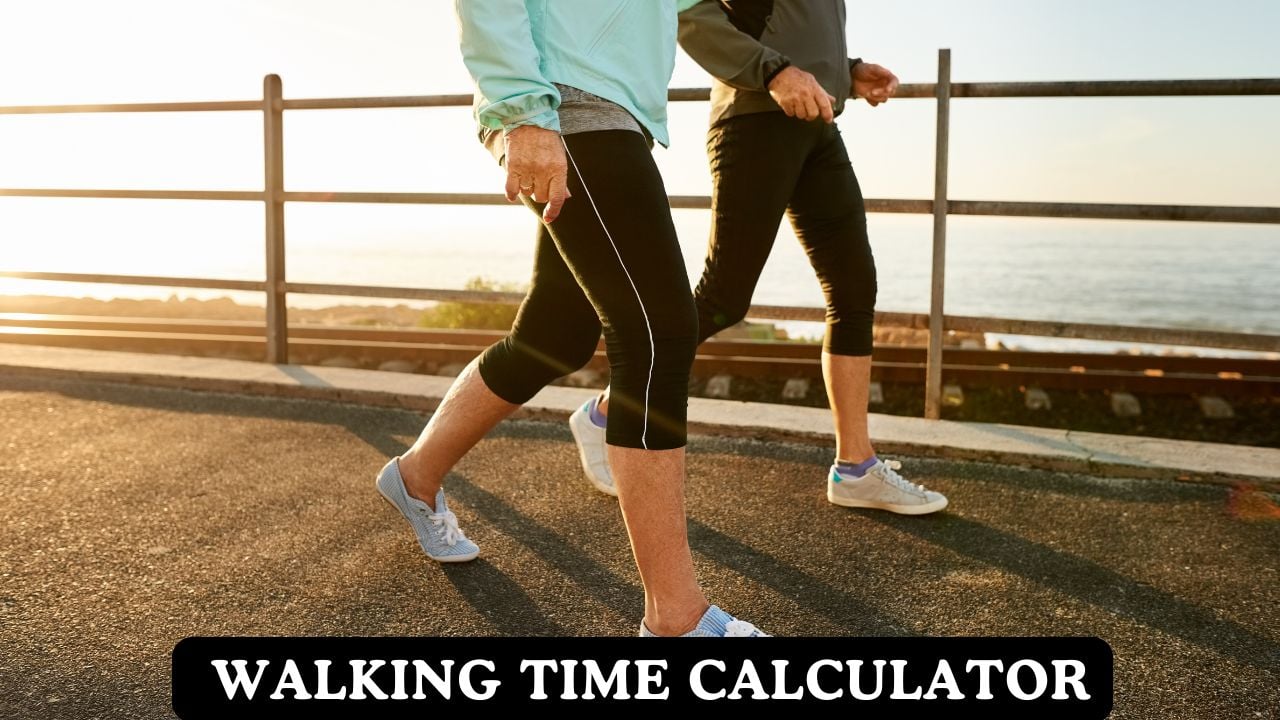🚶♂️ Walking Time Calculator
Calculate walking time, distance, pace, and discover health benefits for your daily walks.

Walking Time Calculations
Walking time calculators help you plan your daily walks and understand the health benefits you'll gain. Our calculator considers your age, walking speed, terrain type, and rest breaks to give accurate time estimates. Unlike simple distance-time calculators, we account for real-world factors that affect walking pace. Learn more about fitness benefits to understand how regular walking improves heart health, mental well-being, and overall quality of life.
Walking Speed Categories & Health Benefits
Different walking speeds provide different health benefits. Slow walking (2-3 km/h) is great for beginners and gentle exercise, while brisk walking (4-5 km/h) offers better cardiovascular benefits. Very fast walking (6+ km/h) can burn more calories but requires good fitness. Our calculator helps you choose the right pace for your fitness level and goals. Discover effective core strengthening exercises to build the stability needed for faster walking and better posture.
Walking Time Calculator Features & Walking Health Guide
| Calculator Type | What You Input | What You Get | Best For |
|---|---|---|---|
| Time Calculator | Distance, speed, age, terrain, breaks | Walking time, calories, health tips | Planning walks |
| Pace Calculator | Distance, time taken | Your walking speed and pace | After walks |
| Health Benefits | Daily walking minutes, intensity | Disease risk reduction, longevity | Motivation |
| Steps Counter | Step count, stride length, time | Distance walked, health category | Fitness tracking |
Unit Support: Our calculator works with kilometers, miles, meters, yards, feet, and both kilograms and pounds for global accessibility.
Walking Speed Categories & Daily Step Goals
Walking Speed Categories & Calorie Burn
| Speed Category | km/h | mph | METs | Calories (70kg/hr) | Health Benefits |
|---|---|---|---|---|---|
| Leisurely | 2.5 | 1.6 | 2.5 | 175 | Gentle exercise, beginners |
| Slow | 3.2 | 2.0 | 3.0 | 210 | Light cardio benefits |
| Moderate | 4.0 | 2.5 | 3.5 | 245 | Good cardiovascular health |
| Brisk | 4.8 | 3.0 | 4.0 | 280 | Weight management, fitness |
| Fast | 5.6 | 3.5 | 5.0 | 350 | High fitness, endurance |
| Very Fast | 6.4 | 4.0 | 6.0 | 420 | Athletic performance, power |
METs (Metabolic Equivalent): Measure of exercise intensity. Higher METs mean more calories burned per hour.
Daily Step Goals & Health Categories
| Step Category | Daily Steps | Distance (approx) | Health Benefits | WHO Classification |
|---|---|---|---|---|
| Sedentary | < 5,000 | < 4 km | Minimal benefits | Low activity |
| Low Active | 5,000 - 7,499 | 4 - 6 km | Some health benefits | Low activity |
| Somewhat Active | 7,500 - 9,999 | 6 - 8 km | Good daily activity | Moderate activity |
| Active | 10,000 - 12,499 | 8 - 10 km | Excellent health benefits | High activity |
| Highly Active | 12,500+ | 10+ km | Maximum health benefits | Very high activity |
WHO Guidelines: World Health Organization recommends 10,000 steps per day for optimal health benefits and disease prevention.
⚠️ Walking Safety & Health Guidelines
Walking is one of the safest forms of exercise, but always listen to your body. Start slowly if you're new to exercise, stay hydrated, wear comfortable shoes, and consult your doctor before starting a new walking program, especially if you have health conditions. The walking time estimates are based on average healthy adults - individual results may vary based on fitness level, terrain, weather, and personal factors.
